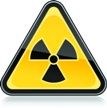
At least 20 workers involved in the desperate attempt to head off a nuclear disaster at Japan’s Fukushima nuclear power plant have now been exposed to radiation, according to the International Atomic Energy Agency (IAEA).
That number includes employees of the plant, along with police officers and firefighters who are helping battle the apparent meltdown at the plant.
Although workers have been rotated in and out of the complex in an attempt to reduce their radiation exposure, reports have surfaced that Japan's Ministry of Health, Labor, and Welfare more than doubled the permissible level of radiation exposure for workers so that employees can work longer shifts. The new standard is five times the maximum exposure permitted for American nuclear plant workers.
With the previous limit of 100 millisieverts, workers could only work for 15 minutes at a time. Under the newly set limit of 250 millisieverts, 30 minute shifts are possible.
A day after being grounded due to high levels of radiation, military helicopters resumed flying over the damaged reactor and dumping loads of seawater on it in an effort to cool overheated uranium fuel. The missions are limited to 40 minutes each in order to limit radiation exposure for the crews.
In a congressional hearing in Washington, D.C., U.S. Nuclear Regulatory Commission Chairman Gregory Jaczko said that all the water was gone from the unit’s spent fuel pool, and that anyone who gets close to the plant could face potentially lethal doses of radiation in a very short time. “We believe radiation levels are extremely high,” he said.
"I don't know any other way to say it, but this is like suicide fighters in a war," said Keiichi Nakagawa, associate professor of the Department of Radiology at University of Tokyo Hospital.